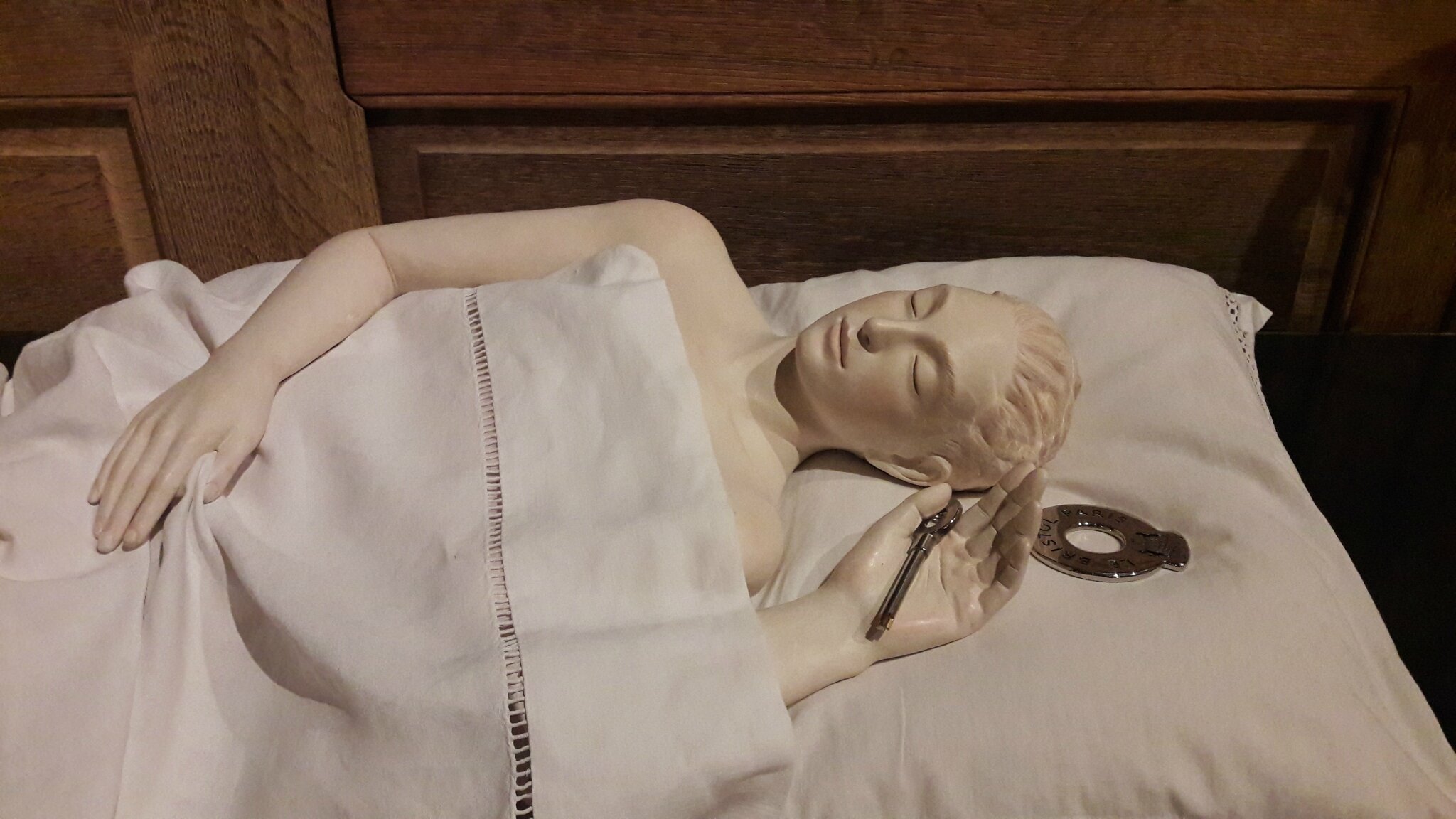Rêveuse by Serena Carone (2014) is a smaller-than-life sculpture of her mother, who died in the Hotel Bristol. While the sculpture appears lifeless and at peace, as I approached the sculpture more closely I noticed the chest slowly moving up and down, as if the representation of her mother was breathing. In uneven intervals, she either stopped or started filling her lungs with air again. The material appears to be plastic, yet it is difficult to tell. The woman is covered with a soft-looking piece of fabric, laying on a pillow matching the sheet, with a disproportionality large key to her left. The focus of the sculpture lays on her face, her soft features and the look of peace and calmness it portrays.
The sculpture pays tribute to Carone’s mother, dying in her hotel room and the last breaths she took in the presence of her daughter. I believe it symbolizes serenity and peace and questions our interpretation of death and mourning. We largely associate death with suffering, yet we neglect that the greatest part of suffering takes place as one is still alive. This means that we could assume that death at times comes as salvation to the soul and the physique. It can be ones rescue to fulfill the natural cycle of our being of humans on this earth.
The reason why I find this piece of art incredibly moving is the diverse interpretation and relationship we have to the death of our relatives and we interpret their own relationship to death themselves. While we often fade out aspects of pain (and possible pain) from our lives, I believe it is a subject of immense relevance and intensity. One of fear and uncertainty which builds a great part of our actions towards others and themselves. What particularly intrigued me about the sculpture was not just the mechanical aspect of the breath but also the resemblance of the facial features with renaissance portraits of women. It intrigues me how she looks both soft and calm yet also strong and harsh in a way. I think this mirrors our relationship to the death of relatives. While one would never dare to express oneself that way, we perceive it as a selfishness of the world, an inequity upon us personally and neglect to take it in as a part of the cycle of life. We learn and grow from pain, express ourselves through is and deal with what troubles our souls at all times. This is what makes this portrayal so successful. It alienates the person through the sculpture yet also takes them back to life through the chest rising and lowering itself. It creates and destroys our hope at the same time.
